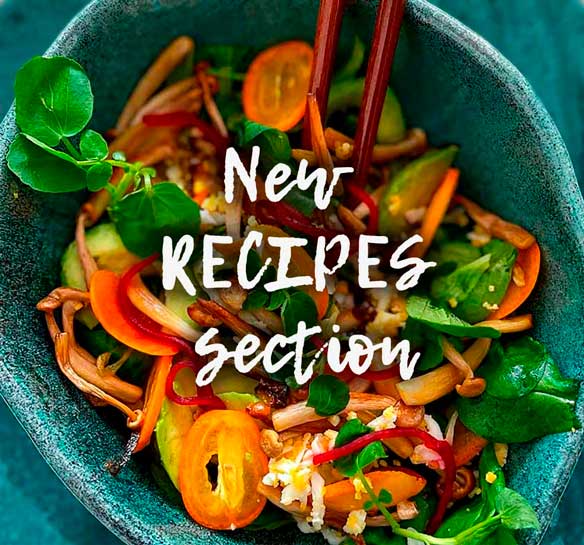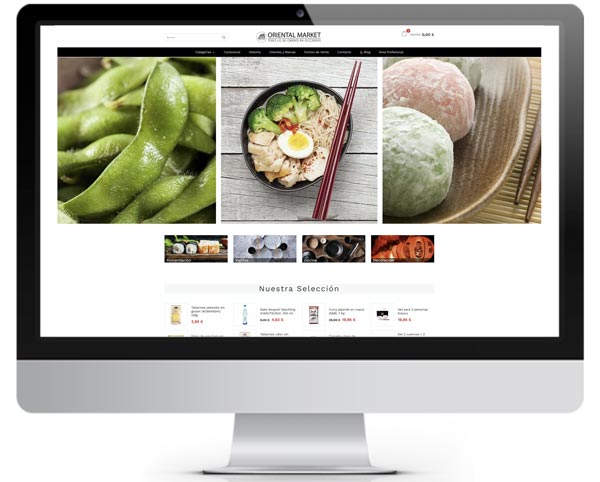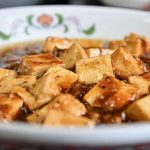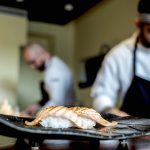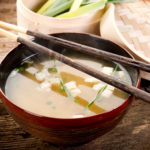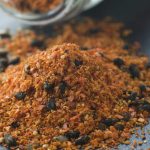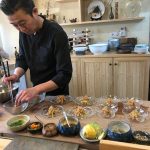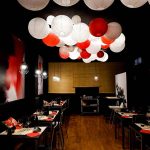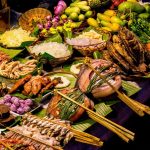Best Japanese restaurants in Seville
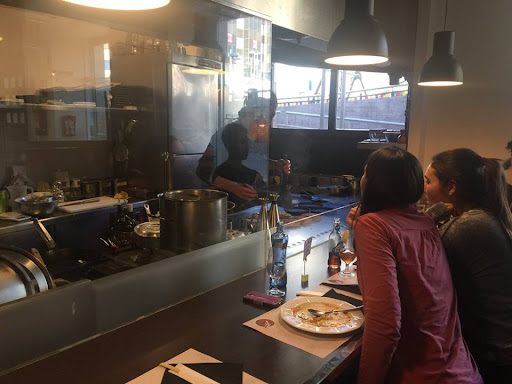
Seville is one of Spain’s cultural treasures. But its richness is not only reflected in the beauty of its monuments, but also in its gastronomy. The Andalusian province has a very extensive gastronomic offer, which is not only limited to the traditional Spanish tapas. Japanese restaurants abound in the city and will allow you, dish by dish, to travel to Japan itself. If you are passionate about chopsticks, here are the best options that you must try (yes or yes) in Seville.
For sushi lovers: You Sushi
C. Sta. María la Blanca, 23
Telephone: 954 52 22 82
Diversity in the kitchen! The Japanese restaurant You Sushi, located in the historic centre of Seville, offers a wide range of sushi, ramen and starters. The menu offers different types of sushi: squid, octopus, omelette, red clam, tuna belly, shrimp, butterfish, salmon and cheese, sea bream, salmon roe and more… The starters range from seaweed and cucumber dressing, house salad, skewers, gyozas, fried cheese mix you to miso soup. Their dishes are varied and are prepared according to the rules of Japanese cuisine. They also have sushi mix menus for a practical and economical home delivery service.
Tasting menu: Kaede
C. Sta. María la Blanca, 32
Telephone: 954 22 09 88
The restaurant Kaede, a Japanese name meaning “maple leaf”, symbolises the values of the place: strong and unbreakable. The red colour of the leaves represents sincerity and enthusiasm towards customers. In addition, the restaurant is also located in the old town of Seville, a place with history and tradition. The menu combines the gastronomy of Japan and China with the culture of the West. The tasting menu starts with soy soup, followed by seaweed and cucumber salad, fried mini rolls, sushi and mixed sashimi and finally a choice of drink, dessert or coffee.
Faithful to tradition: Miyabi
Calle Pirineos S/N Edificio Corona, local 1
Telephone: 954 37 35 18
Miyabi has great professionals in Japanese cuisine. The chef, with more than 20 years of experience, prepares traditional and elegant dishes from the capital of Seville. The menu features typical Japanese dishes: miso shiru, endame, sunomono, takoyaki, yakisoba, okonomiyaki, tuna tataki, gyozas, avocado sushi, omelette, beef with cheese, fried rice, flamed salmon, sea bream… At Miyabi you can enjoy this classic gastronomy and its culture in a typical Japanese décor.
Innovative sushi: Sibuya Sushi Bar
Albareda, 10
Telephone: 954 03 50 30
Ready to enter a “peaceful place”? Sibuya Sushi Bar is the ideal place to unwind and enjoy delicious sushi. The relaxed atmosphere of the restaurant helps guests to release the stress accumulated throughout the day and reconnect with themselves. Sibuya provides top quality ingredients to create unparalleled and daring dishes. Their innovative cuisine makes eating sushi an experience: flamed rolls, hot rolls, eel maki, veggie bao, sake sibuya, wakame salad, among other options that will leave you with your mouth open.
An explosion of flavours: Restaurante L.san
Calle Diego Angulo Íñiguez, 10
Telephone: 854 52 94 08
The best sushi speciality in a combination of flavours. The restaurant L. San opens its doors to the capital to offer traditional sushi, but with a touch of creativity in the pieces. The cosy and familiar atmosphere is ideal for tasting Asian food at the best quality-price ratio. They offer special products such as L. San sushi with violet rice or Valentine’s Day sushi, as well as a variety of other dishes such as: duck banbao, Japanese style ribs, chicken with teriyaki, beef with spicy sauce… and many more!
Avant-garde Japanese gastronomy: Miss Sushi
C/ San Pablo, 20
Telephone: 955 549 328
80 unique proposals! Miss Sushi prepares high quality products fusing recipes and flavours to obtain the ideal dish. Red tuna from Barbate, Norwegian salmon and free-range chicken are some of the fresh ingredients used to create avant-garde Japanese cuisine. Their philosophy is based on solidarity and a firm commitment to the product and their customers. They break with all the clichés and democratise sushi to make it accessible to all budgets. They surprise with their capacity for innovation and creativity in the kitchen. You can enjoy a pleasant meal in a cosy, glamorous and urban atmosphere within everyone’s reach.
Top quality ingredients: Wasabi
C. Amor de Dios, 36
Telephone: 955 27 80 15
At the Wasabi restaurant they call themselves… Sushi lovers! Lovers of healthy and balanced Japanese food. They want to popularise sushi with a wide variety in their menu, always cooking with top quality ingredients, fresh and handmade products, representing Japanese culture and cuisine. They offer vegetarian menus, gluten-free menus, special uramakis, temakis, Japanese salads, mochis, gunkan, various tartares… More than a job, it is a ritual to prepare all the pieces and dishes following the method learned from Japanese chefs.
Japanese cuisine has been experiencing a boom in recent years and more and more people are taking up the challenge of cooking their favourite dishes at home. Oriental Market is the main importer of Asian products in Spain and sells many products to Japanese restaurants, which you can also buy in the online shop so that your dishes breathe all the aromas of Japan.
Typical Thai food
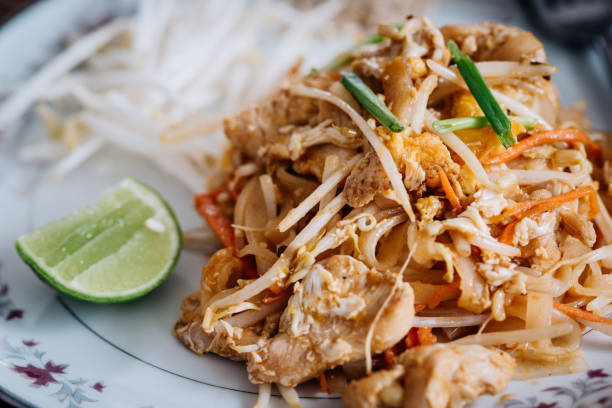
Thai cuisine shows great appreciation for its culture and demonstrates generosity to its host. Following tradition, dishes begin with a spoonful of rice, followed by a few spoonfuls of each dish, always leaving a little food on the plate. Each bite is different, with a sweet, sour and spicy taste that sets them apart from other countries. In addition, it has direct influences from southern China and has Dutch, Portuguese and Japanese touches.
Today, Thailand’s cuisine is distinguished by its personal approach and is divided into four culinary styles: northern, with milder cooking; northeastern, with spicy food and glutinous rice; central, with jasmine rice as the main ingredient; and southern, with coconut milk and cashew nuts. In addition, Thai curries are identified by their colour, the one with the hottest sauce is green, followed by red, yellow and orange. Other popular curries are Panang and Massaman with Malay and Persian influences.
1. Pad Thai
In the mood for noodles? Pad Thai is a typical national street dish, popularised during World War II due to rice shortages. Its original name is ‘Gway Teow Pad Thai’, composed of the Chinese word ‘Gway Teow’, meaning rice noodles and ‘Pad Thai’, meaning fried and Thai. This dish, as the name suggests, is made from rice noodles with stir-fried eggs and tofu, seasoned with tamarind juice and fish sauce, and also contains dried shrimp, onion, pepper, garlic and palm sugar. It is usually served with bamboo shoots, slices of lime, ruddy banana flowers and a sprinkling of peanuts. Some variations of Pad Thai are served with chicken or pork.
2. Pad See Ew
Unlike Pad Thai… This food is mainly made of dried flat rice noodles, which are flexible, white and shiny, as they are covered with a thin layer of oil. The noodles are cooked with plenty of soy sauce, meat, garlic, tofu, egg and Chinese broccoli. For best results, they are cooked in a hot, seasoned wok, and a high temperature is important to promote the texture of the noodles.
3. Som Tam
The popular green papaya salad! Som Tam is a dish originating from northeastern Thailand. Its name means “to hit the bitter” and it is composed of a fish sauce, with pepper, garlic, tomato, lemon and palm sugar. The salad is complemented with roasted peanuts, green beans and shrimp. The combination of sour, spicy, salty and sweet flavours is ideal for anytime, an impromptu breakfast, a casual lunch or a light dinner.
4. Khao Niao
Khao Niao is a soft, chewy, glutinous rice, widely found in northern Thailand and Laos. It is usually eaten with the hands, kneaded lightly with the fingers and eaten bite by bite. This food accompanies many dishes, from appetizers to desserts, and is certainly an essential accompaniment to meats such as pork. The rice follows a whole preparation process: first it is soaked in water, drained and then steamed in a bamboo basket. When ready, the rice is kept in a covered container to prevent it from drying out.
5. Khao Pad
A good and easy dish to prepare? Khao Pad is a stir-fried rice dish, consisting of eggs, chicken or pork, garlic, onions, soy sauce, pepper, fish sauce, fresh ginger and vegetables. All cooked in a wok over high heat and stir-fried constantly. All the traditional Thai flavours come together to create this distinctive and traditional meal.
6. Ba Mee Kiew
Ba Mee Kiew is the delicious egg noodles made with wonton. What is wonton? It is a Cantonese dumpling stuffed with meat. The dish has two options: noodles with or without broth. In the soup version, the ingredients are mixed together, while in the other version, the ingredients are served in separate dishes.
7. Laab
Laab, the traditional meat salad, seasoned with fresh herbs. It is mostly consumed in Laos and northern Thailand. It is prepared with pork, chicken, fish, duck, beef or buffalo. Spices and seasonings may vary from area to area, but it is usually cooked with coriander, spring onions and an excess of mint.
8. Tom Yum
Want to try a sour and spicy soup? Then your choice is the Tom Yum dish, a Thai soup, with different versions, the best known of which is Tom Yum Goong. It is made with Nam Prik Pao, a base of herb paste and spices: chilli, garlic and shallots. The soup can also contain mushrooms, tomatoes, coriander, sugar, lime juice and fish sauce.
9. Thai tea
Refreshing and strong… Thai tea can be drunk as a dessert and helps to soothe spicy and spicy food. It consists of black tea, contains yellow colouring and an aromatic hint of vanilla. Then, ice is added if you want to make iced tea and finally, milk, which can be whole, coconut, condensed or low-fat. The averages vary between half and half, a quarter of milk or three thirds, depending on the consumer’s taste.
10. Khao Niao Mamuang
The authentic popular Thai dessert is Khao Niao Mamuang. It consists of two basic ingredients: glutinous rice and mango slices. Its sweet and sour combination is balanced with coconut milk to form a smooth and creamy dish. Some variations are served with sweet coconut cream topped with mung beans or sesame seeds.
Typical Japanese food
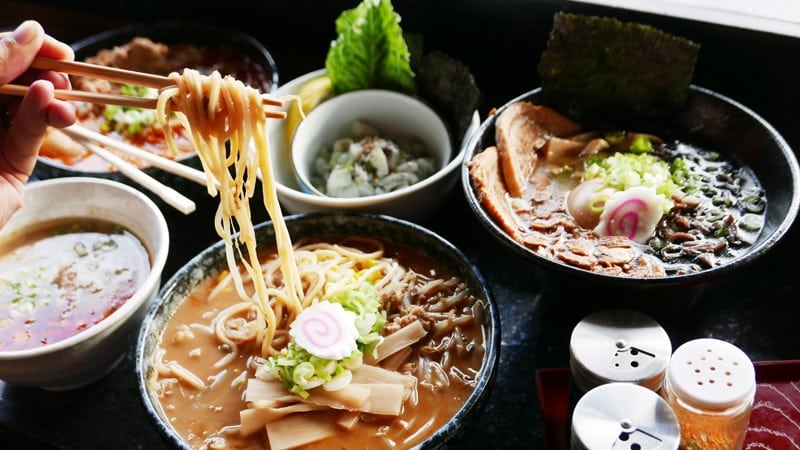
Japanese cuisine is one of the richest in history and culture. It also features a wide variety of foods ranging from rice, vegetables and meat to the sweetest and most delicious sauces. Ingredients whose combination has given rise to a long list of dishes with many years of tradition that fuse all kinds of textures and flavours.
But are the dishes of yesteryear still the most popular today? Here is a selection of the gastronomic treasures that best represent Japan’s traditional cuisine and are still popular all over the world.
Sushi
Let’s start with sushi! In the past, the word sushi referred to fish preserved in vinegar, but nowadays this star dish is associated with different ways of presenting rice, which is pre-treated in vinegar and topped with salmon, avocado, tuna, octopus, eel, seaweed or roe.
However, there are an infinite number of sushi options and it can sometimes be difficult to differentiate between them. The secret is in the preparation. So, for example, nigiri is the classic rice ball with the fish ingredient on top, norimaki is a roll of rice wrapped in seaweed and stuffed inside, or temaki, one of the most outstanding, is a cone-shaped seaweed that envelops the rice, vegetables and fish.
Sashimi
Unlike sushi, sashimi consists of seafood, meat and other foods filleted and served raw, but without rice. They are often presented on a bed of vegetables or with other types of fish. The most popular sashimi are tuna, salmon, sea bream, mackerel, bonito, shrimp or squid.
The dish is served with a small bowl of soy sauce and depending on the type of sashimi, wasabi and ginger may be added in small quantities.
Ramen
Japanese cuisine also takes food from other countries, such as ramen, which originated in China and has become popular in Japan. What does it consist of? It is presented in a bowl and broth is added as a base, noodles and the main ingredient, which can be pork, chicken, beef, fish or vegetables.
Depending on the type of ramen, it will have one base or another. The best known are: shoyu, a broth flavoured with soy sauce; shio, a light broth with salt; the characteristic miso, a thick miso soup made with soybean paste; or tonkotsu, a broth made with pork bones.
Tempura
Although tempura may seem like a contemporary recipe, its origins date back to the 16th century, when it was introduced to Japan by the Portuguese. It has become a very popular dish and is cooked in many restaurants.
The tempura is a type of batter that uses special tempura flour and is cooked under a special rice oil for better cooking. It is usually battered with prawns, fish, mushrooms, vegetables, etc. and is served as a main dish or with a side of rice.
Udon
Udon noodles are thicker than the rest, while soba noodles are white, thin and with a different texture, or yakisoba noodles, which are more similar to noodles and fried. However, udon noodles are made with wheat flour and are prepared for hot or cold dishes, accompanied by tempura, curry broth, vegetable broth and other varieties of seasonings and sauces.
Japanese curry
Japanese curry, introduced in the Meiji era, has a sauce with a thicker texture and sweeter taste than Indian curry, characteristically spicy, but featuring the basic spices. The meat used is usually pork or beef and the ingredients include potatoes, onions and carrots.
Gyoza
Gyoza, originally from China, is cooked boiled or fried in the form of a dumpling. The dough is thin and filled with chopped meat and vegetables. The typical filling consists of pork, chives, green onions, lettuce, ginger, garlic, soy sauce and sesame oil. However, there are also other varieties.
Yakitori
Yakitori are grilled chicken skewers, cooked over charcoal and served with an alcoholic beverage such as beer. It is common to find this dish at food stalls at festivals. The best ones, though, are served in speciality restaurants.
Matcha tea
Green tea is one of the most popular teas in Japan. It is a central element in the tea ceremony, which is prepared in a ritual with the fundamental principles of Zen. Matcha tea, which is a powdered green tea, uses only the best quality leaves, dried and pressed to a fine powder to which hot water is added.
Mochi
Mochi cake, made with mochigome glutinous rice, is one of the most popular desserts in Japanese culture, served mainly on religious holidays.
It is made slowly by pounding the boiled rice into a thick dough and then rolling it into small circular shapes. Finally, it can be filled with an ingredient such as fruit or ice cream.
In our online shop you will find most of them or ingredients to make and accompany them.
Best japanese restaurants in Valencia
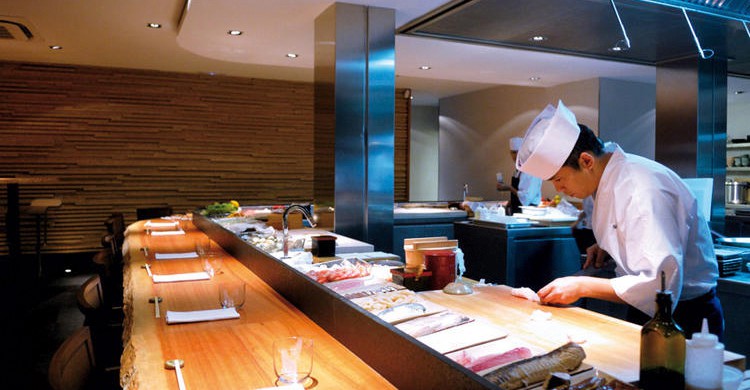
Although when we think of the gastronomy of “la terreta” we automatically think of a succulent paella, the truth is that the culinary offer that we can find in Valencia is very varied, and one of the most outstanding is, without a doubt, Japanese. Ramen, sushi, mochis, meat, yakisoba, udon… whatever your craving, in Valencia you will find a restaurant to enjoy the essence of Japan. And as among so many options it may be a little difficult to choose the one that best suits you, here is a small selection of our favourites:
List of the best Japanese restaurants in Valencia
To try a bit of everything: Nozomi Sushi Bar
Calle Pedro III El Grande, 11
Phone: 961487764
Nozomi Sushi Bar presents a special tasting menu consisting of: miso soup or salad for starters, tempura or sashimi to accompany, tartar, usuzukuri, 8 pieces of nigiri, 1 temaki as the main course and a dessert of the kitchen’s choice. The restaurant provides an extensive Sake menu for lovers of the Asian drink who can enjoy it seated at an authentic Japanese sushi bar. Nozomi always looks for the best quality raw material, that’s why its menu is subject to market availability. It is an ideal place for a celebration or formal business event.
Japanese-Brazilian fusion cuisine: Restaurant Kaikaya
Plaça de l’Ajuntament, 10
Telephone: 960 44 64 80
The Kaikaya restaurant is the result of the fusion between traditional Japanese cuisine and exotic Brazilian cuisine. Nikkei Nipo-Brazilian cuisine originated in 1908, when the ship Kasato Maru docked in the port of Santos, giving rise to the first Japanese in Brazil. Both gastronomies went through a process of adaptation and creativity until they acquired a unique fusion of flavours. Shiro-Gurin, Salve-Salve, Tuna Tataki or Ramen de churrasco de pato are some of the dishes you can try in this restaurant located in the centre of Valencia.
The best ramen in Valencia: Ryukishin
Calle Salamanca, 12
Telephone: 963236441
Japan is just around the corner! There is no better place to eat ramen than at Ryukishin restaurant in Valencia. Every day they cook their broths for hours to obtain an excellent Japanese dish. You can choose from five different ramen combinations, cooked according to tradition: the Shio Ramen, a lighter broth with vegetables, chicken pork, kombu seaweed and combined with bamboo, spinach and chives. Paitan Ramen, on the other hand, features a creamier broth made with vegetables and chicken. Miso Ramen is also a favourite for its aromatic, slightly spicy broth, not to mention Shoyu ramen for its savoury vegetable, chicken and pork broth. Finally, the restaurant also has a vegetarian option, the vegetarian Miso ramen, a 100% vegan and slightly spicy broth.
Awarded two Soles by the Repsol Guide and the Michelin dish: Komori.
Calle del General Gil Dolz, s/n
Hotel The Westin Valencia
Telephone: 960 011 755
The restaurant directed by Hiromi Okura is located in the Hotel The Westin Valencia, offering a modernist and exclusive style for its customers. Komori was awarded two suns by the Repsol Guide and the Michelin plate. This status is reflected in its distinguished sushi bar and its Kabuki cuisine with Valencian touches, a menu prepared by chef Andrés Pereda. The Esgarraet de gindara or the Nigiri de anguila maresa are typical dishes of this fusion that reinforces the Valencian capital and maintains the Japanese philosophy.
The temple of mochi: Mochisan
Calle Martí l’Humà, 4
Telephone: 625 06 56 13
A bite of heaven! Mochis are a Japanese dessert made with mochigome glutinous rice, an elastic dough that melts in every bite. Inside are the most original fillings: oreos, strawberries, yuzu mousse, red fruit jam and biscuit, chocolate, pistachio… offering traditional and modern flavours. The Mochi-san artisans make all kinds of mochis and try to take care of the environment, leaving the smallest possible footprint. Their cuisine is committed to “take away” and sustainable responsibility. Their desserts are made without unnecessary artificial preservatives.
For the more carnivorous: Honoo
Calle Ernesto Ferrer, 14
Telephone: 961115393
The Honoo restaurant stands out for the quality of its raw materials, imported directly from Japan, and its speciality meat dishes such as entrecote or organic Wagyu steak, aged T-bone steak, black Angus or misozuke Iberian feather with seasonal Japanese vegetables. The head chef, Eduardo Espejo, was champion of the cooking competition with Chufa ecotur, for his Japanese and Valencian fusion, featuring the tiger nut as the main ingredient. Honoo’s dishes are among the most elaborate in the capital.
Creative and avant-garde: Tobiko
Calle: De Boix, 6,
Telephone: 654816965
The aim of Tobiko’s cuisine is to give its customers a unique experience. In addition to using top quality ingredients, they prepare the most typical dishes of traditional Japanese cuisine in a very innovative way. Of course, their strong point is the presentation. One of the most striking examples is El Jardín Zen, a dessert that is inspired by this Buddhist concept and which perfectly replicates all the details: the sand, the rake, the stones… all created from delicious Japanese sweets. So if you are one of those people who “eat with your eyes”, you can’t miss it!
Japanese cuisine is becoming more and more popular and many people now dare to cook some dishes at home. In Oriental Market we sell directly to many restaurants in Valencia our products imported directly from Japan and you can buy them in our online shop so you can cook with all the flavour of Japan.
Healthy snacks with a taste of Japan!
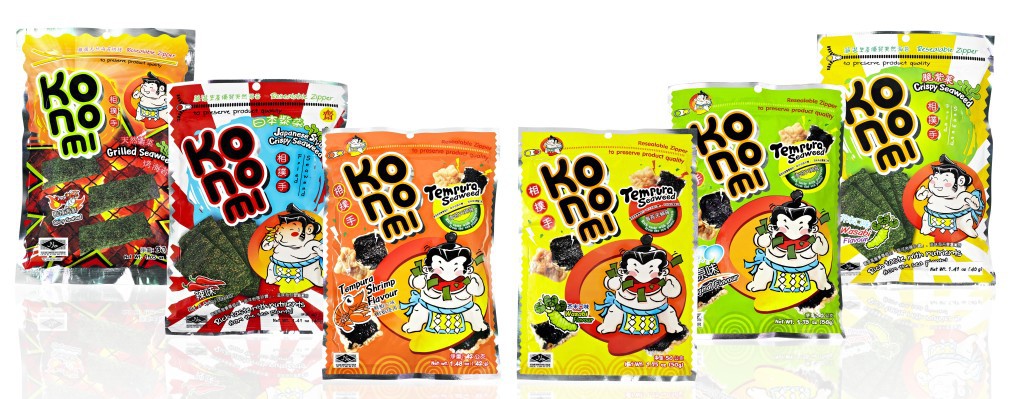
With the arrival of high temperatures and the arrival of beach or pool days, the now historically known Operation Bikini is on the rise. Who among you has already started it?
Although there is still a great majority of people who wait until the last minute, there are more and more cautious people who are starting to take care of their figure from the tips and tricks in healthy diets. Ours: from Oriental Market we recommend you to take care of your diet throughout the year to improve your health and enjoy low-calorie dishes that are authentic delicacies. This time we want to talk about snacks. Read more
Gastroculture: Cupnoodles Museum
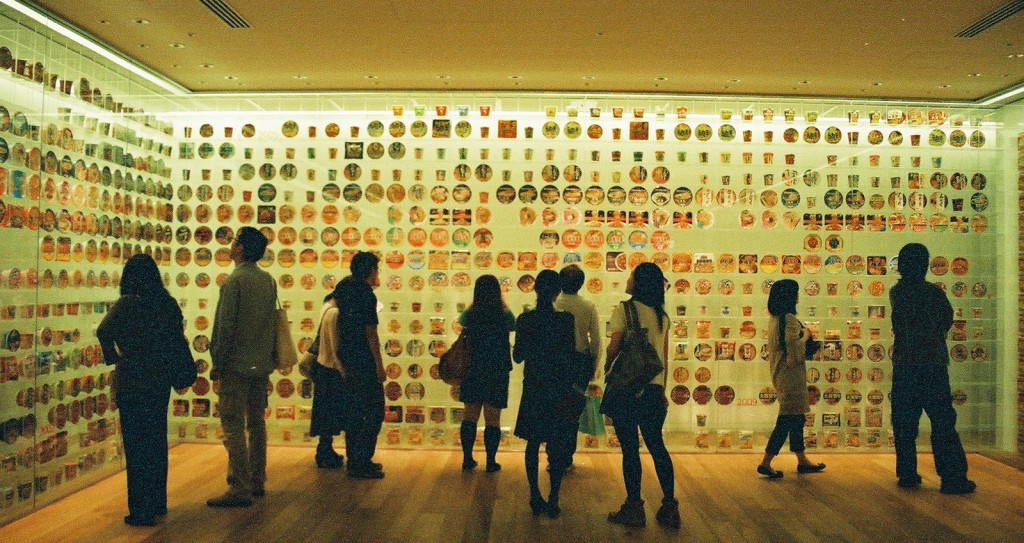
If last week we talked about Noodles as a gastronomic trend on the rise, as well as the great diversity of products and varieties that exist around them, on this occasion we did not want to miss the opportunity to talk about the Official Museum of this recipe: the Cupnoodles Museum. The fact is that the history behind this gastronomic proposal is of such magnitude that there are many who wish to learn about its origins, forms of consumption and new trends linked to the gastronomy of each country. Read more
Our visit to Feria Alimentaria
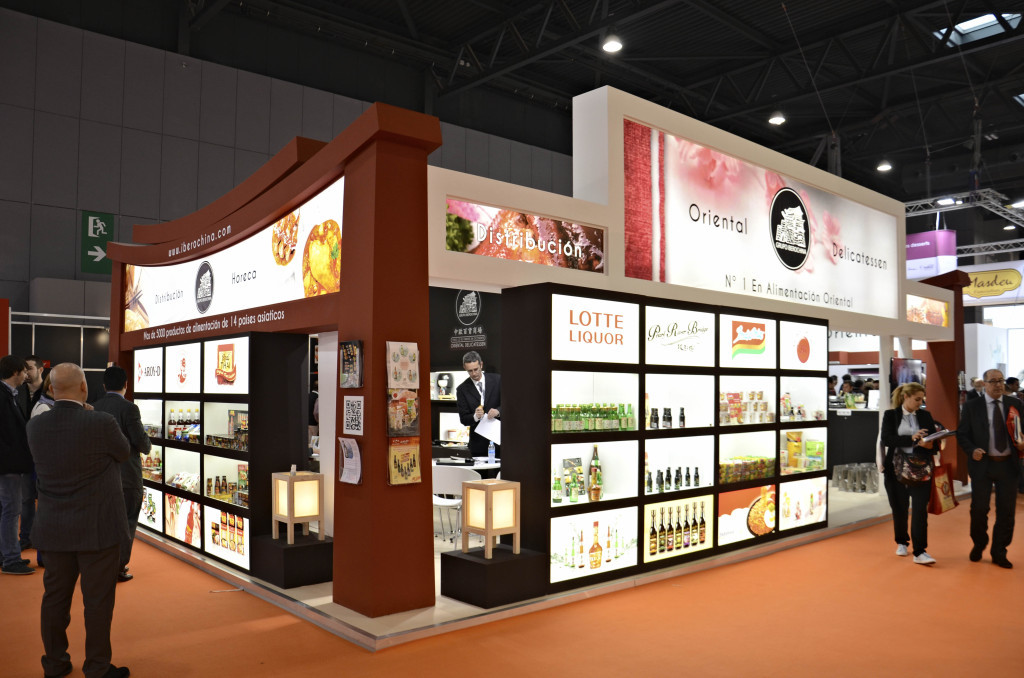
For those of you who were not able to visit us at the last edition of Feria Alimentaria, we have prepared this small space dedicated to inform you of all the new products we presented and the success we had in terms of attendees at our stand. This year, Oriental Market* was the first time we presented ourselves and we did it in style, with a large space in the Multiproduct pavilion next to the big brands of our country. During the days of the Fair, the whole team had the opportunity to present our wide variety of products from more than 14 Asian countries, we gladly attended to all those interested who came to learn about our brands and we offered a tasting in situ of some of our best recipes. It was undoubtedly a great success. Read more
Made-to-measure slate tableware
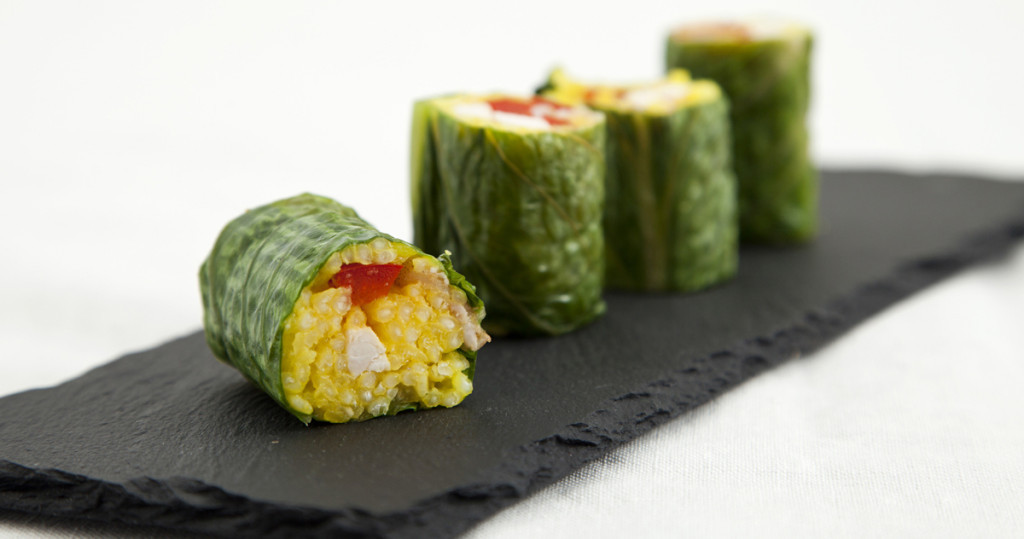
Do we already have all the ingredients we need to prepare our oriental menu for the day? Surely we do, but perhaps we are missing something? Possibly a good set of oriental tableware. Although so far in this blog we have been telling you about our novelties in oriental food products (new brands, premium products for Japanese cuisine or places of interest linked to some trendy ingredient of oriental cuisine), it is now that in Oriental Market we also want to discover other of our products linked to oriental gastronomy. Read more
Sushi varieties: Maki, Hosomaki, Uramaki, Futomaki, Temaki, Nigiri, Gunkan, …
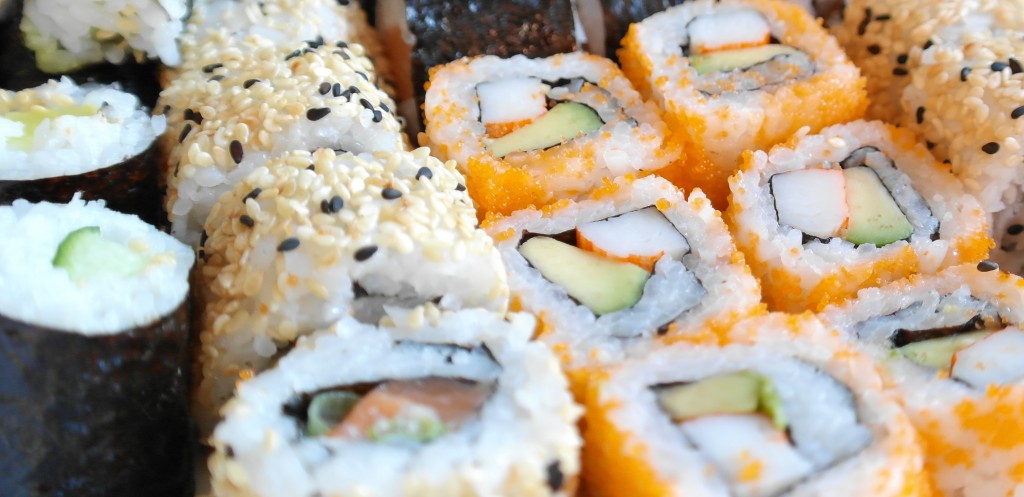
If a few weeks ago we talked about toppings, as basic ingredients for the preparation of all sushi, and last week we explained the best presentation thanks to the range of slate tableware, this time we finish off the job in the kitchen: let’s get to know some of the best sushi varieties and get ready to prepare the menu!
Read more
Ginseng, an undiscovered ingredient
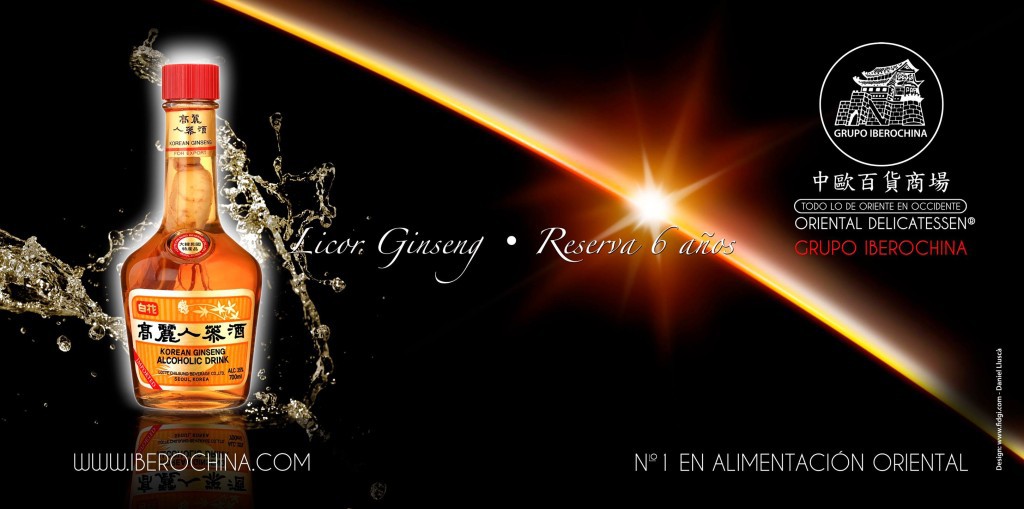
Perhaps many people have heard of it, but there are probably few who are aware of the properties that this plant has for our bodies. Ginseng is a medicinal plant that has been used in many cultures for a long time, and the Eastern culture is one of them. Because this attractive plant has a root rich in active ingredients that grows mainly in the cold areas and foothills of the mountains of China, Korea and Japan.
Read more

